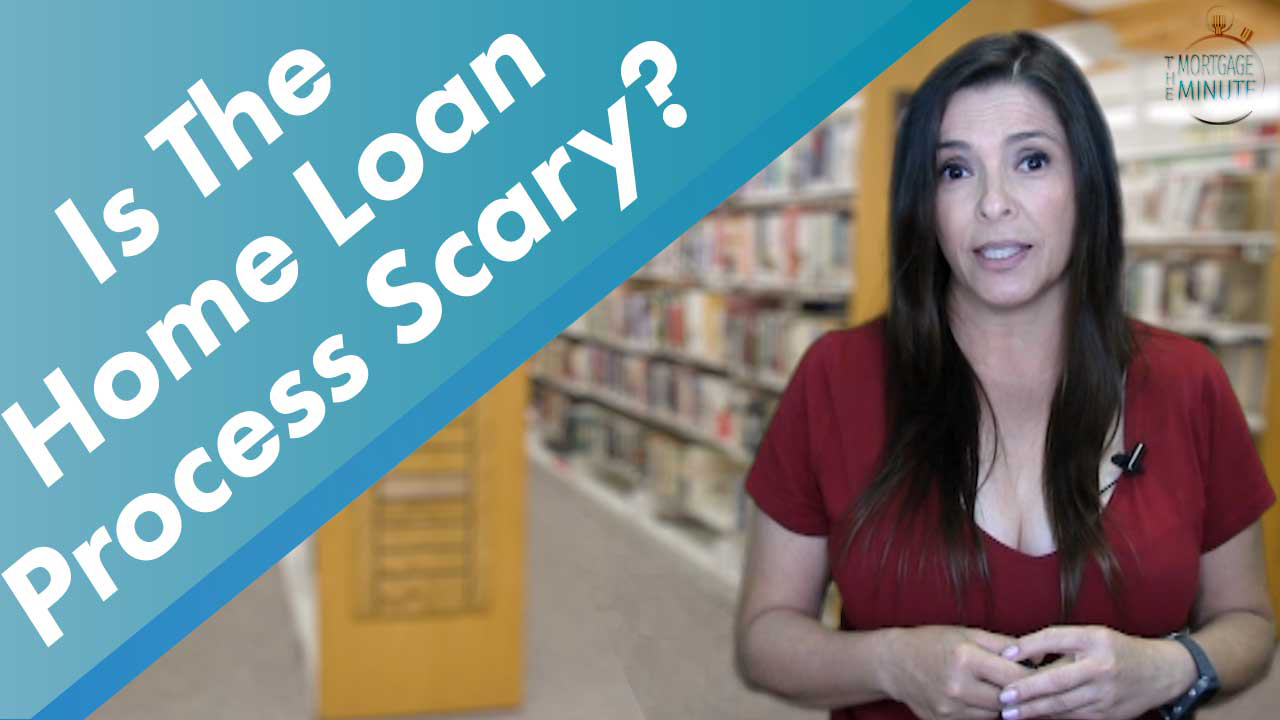Is the loan approval process really as difficult and scary as you think?
I’m going to tell you about the four steps of the mortgage loan approval process then you can decide.
The Mortgage Minute is a weekly series presented by Laura Borja (NMLS#199107), your San Diego home loan expert.
Step 1- Application
The mortgage loan approval process begins with the loan application.
A lot of what I’m going to tell you about will have already been taken care of if you went through the process of getting yourself pre-approved before you went out shopping for a home but let’s pretend you didn’t.
During the initial interview, your loan officer is going to ask you to provide all of your income and asset documentation. That means bringing in your W-2 tax returns pay stubs as well as bank statements for the accounts that are going to be included in your  application.
application.
Your loan officer will also be updating a full mortgage Credit Report with information from all three credit bureaus for all applicants. At that point you will also be providing any additional documentation that applies to your situation such as letters of explanation divorce paperwork or bankruptcy paperwork. This initial meeting will also be when you and loan officer will discuss you’re available loan options.
Step 2 – Processing
The processing stage begins with the issuing of the initial loan disclosures which will be prepared based on the loan program and terms that you and your loan officer discussed. There are several things that happen simultaneously during the processing stage. The processor will work with the escrow company to obtain copies of purchase contracts title report in any other escrow or title paperwork that needs to be prepared. The appraisal on your home will be ordered by the mortgage company and home inspections and any termite inspections needed will scheduled by your real estate agent.
The loan processor will also be verifying all of the information in your file. This includes credit, employment, assets, social security number confirmations as well as IRS verification of your tax returns. Your loan processor will work with your loan officer to obtain any missing or additional documentation needed. During this step, you will also be asked to provide the information for the insurance company you will be using to ensure your new home
Step 3 – Underwriting
 An underwriter is the person entrusted by the lender with determining your credit worthiness and ability to repay the loan.
An underwriter is the person entrusted by the lender with determining your credit worthiness and ability to repay the loan.
The underwriter does a thorough and complete review of all the documentation and information in your file, not only to ensure your credit worthiness but also to verify that you meet the specific loan program guideline requirements such as credit score and debt to income ratios
It is very common that a conditional loan approval is issued after the initial review by the underwriter. This approval will have a list of questions the underwriter wants answered and/or follow-up documents that he or she feels are needed to complete the file.
Your loan officer and loan processor will work together to gather those final conditions and submit them back to the underwriter.
Step 4 – Closing
This last step can take as little as 5 business days and begins with the issuing of your closing disclosure.
It’s super important that you review and sign the closing disclosure as soon as it is issued. Not only because it contains the final figures for all charges and credits in the transaction but also because the government mandated three-day waiting period does not begin until you sign it. You should then arrange for a wire transfer of the required funds or obtain a cashier’s check.
The next portion will be different if you are not in Southern California and will of course vary a bit from lender to lender.
Once the 3 day waiting period is done, you will meet with a notary to sign the final document package. Included in that package will be the legal document that holds the property as collateral for the loan, the promissory note that obligates you to repay the loan as well as a bunch of other required forms and disclosures.
After the documents are signed and returned to the lender, the closing department will review them but also do one VERY important thing- a final verification of employment. If you are not working where you were at the time of loan approval, the loan is not funding. This is why I tell all of my clients to never make any changes in employment until after the loan closes no matter how tempting it may be. If you must make a move, be sure to consult with you loan officer first.
Assuming everything is good to go, the closing department funds your loan by wiring the loan funds to the title company. The title company then sends the documents to the county recorder’s office for recording and issues us confirmation of recording. And just like that, you are a homeowner!
So what do you think? Is the loan approval process and scary and difficult as you thought?
If you have any questions on this topic or any other mortgage-related topic, by all means reach out to me.
Send me an email
Give me a call – (858) 3-LOAN-SD
Text LOANINFO to 44222
Connect with me on Social Media.
Thanks for checking out this week’s The Mortgage Minute.
Please hit the like button if you enjoyed the Article.
Share it with your friends.
And of course, don’t forget to subscribe.
I’ll see you next week.
